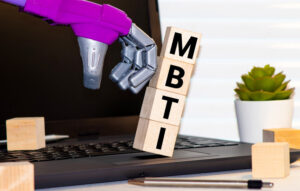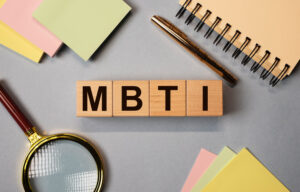Pseudoscience of the MBTI and Personality Testing, Part 2

Today, the Myers-Briggs Type Indicator (MBTI) is one of hundreds of assessments that people use to think about themselves in new, if not entirely serious ways. The MBTI was developed by a mother and daughter with no formal training in psychology or statistics, Katherine Briggs and Isabel Briggs Myers. However, they believed that their experiences as mothers and wives taught them about the innate power of personality types. “But in the mid-20th century, businesses used it as a powerful tool in hiring and management, changing the trajectories of many workers’ lives.” What business executives didn’t realize then was how arbitrary the “science” of the MBTI was.
In “The Capitalist Origins of the Myers-Briggs Personality Test,” Merve Emre said Katherine Briggs always had an interest in personality. She became a minor celebrity from writing parenting columns in the 1920s about how she educated her daughter Isabel. But when Isabel left for college, Katherine fell into a serious depression. Then Katherine discovered the writings of Carl Jung. After reading his book, Psychological Types, she burned the book she had begun to write on personality. Jung became her “savior” and the “author of her life.”
She developed a way of categorizing personalities by using Jung’s theory of psychological types: introversion/extraversion, intuition/sensing, feeling/thinking. To these three dichotomies she added perception/judging. Katherine’s system never caught on until her daughter Isabel Briggs Myers developed an “indicator” after reading a Readers’ Digest article on personality testing in 1941 and wondered if she could develop one with no good or bad types; without judgment or criticism. In 1943 she sold the MBTI to Edward Hay and became a part time employee of Hay and Associates. Hay was one of the first personnel consultants in the U.S.
With the rise of the labor force during and after World War II, newly established consultancies like Hay’s were warming to the idea of using cheap, standardized tests to fit workers to the jobs that were “right for them,” a match made under the watchful eyes of executives eager to keep both profits and morale high.
At the end of World War II interest in the MBTI began to accelerate. Isabel started to pick up accounts that began to double and even triple in size from their initial order. She took large orders from colleges, government bureaus and pharmaceutical companies. Some of her early clients included: Swarthmore College, the National Bureau of Standards, Bell Telephone and the First National Bank of Boston. “By the mid 1950s, Isabel’s clients were the largest utilities and insurance companies in the United States.”
It was through a client of Hay and Associates that she met Oliver Ohmann, an assistant to the vice president of the Standard Oil Company and head of its industrial relations department. Ohmann was a strong conceptual ally of Isabel and he purchased the MBTI from Hay in 1949. Ohmann thought it offered the perfect solution for “introducing people to their true selves and convincing them that the work they were doing was a natural extension of how God had created them.” Ohmann told Hay and Isabel that the MBTI in its primordial form was a bargain struck between God and mammon—“the ideal marriage of ‘higher and more enduring spiritual values’ to the material realities of work.”
But Isabel did not share Ohmann’s vision when it came to type’s spiritual reach. She did not think the benefits of knowing one’s type accrued to all workers equally. She discouraged companies from spending too much money evaluating their workers if they employed mainly unskilled laborers. She said, “The type differences show principally in the more intelligent and highly developed half of the population.” Company executives revealed a high degree of type development while blue-collar workers were the weakest type, their personalities falling “in the no-man’s-land between the indicator’s dichotomies.”
Of course, there existed no controlled study, and thus no real evidence, to validate Isabel’s belief in the inverse relationship between intelligence and the strength of one’s type preferences. But as was the case for the most famous test of the 1940s, the intelligence quotient (IQ) test, evidence mattered less than the indicator’s ability to justify as “natural” or “normal” the divisions that already existed in the world; a world where wealthier, whiter, and more upwardly mobile men were decreed more self-aware than everyone else. It did not occur to anyone, even Isabel, as unusual that the strongest preferences were always expressed by successful, self-assured men with ready access to power. Often it was these men who paid her to manage the personnel dilemmas they found unsavory or tedious. Hiring, firing, promotion, and attrition were all easier to talk about when employers were shielded from the lives of their employees by the abstract, pseudoscientific language of type.
Sometimes subjects she tested and then retested seemed to change their type overnight. “Thinkers became feelers, judgers became perceivers.” From rereading Psychological Types, Isabel discovered this was a phenomenon called “enantidromia.” Jung defined enantidromia as “The emergence of the unconscious opposite in the course of time.” She was confident that the inability of the MBTI to be validated—to produce consistent results for test subjects over time—was based in Jungian psychology.
The Fantasy of the X-Rays of Personality
Sociologist William Whyte became alarmed as corporations were increasingly seen as the answer to post-WW II life with their introduction of new technologies such as television, the availability of affordable cars, and space travel. He was concerned that the American belief in the perfectibility of society was shifting from that of individual initiative to one that could be achieved at the expense of the individual. So, he wrote The Organization Man, which quickly became a bestseller. Inside was an appendix titled, “How to Cheat on Personality Tests.”
Whyte’s belief was that the more a test insisted it was for the individual, and that it promoted objective self-discovery, it hid the total integration of the individual within the organization’s culture. Whyte believed personality tests were tests of potential loyalty. Neither the questions nor the evaluation of them were neutral. They were loaded with organizational values and set a yardstick that rewards the conformist at the expense of the nonconformist person, “without whom no society, organization or otherwise, can flourish.” Whyte encouraged his readers to develop a test-taking persona—a hybrid of your true self, the values of the test maker and the values of the company.
Personality tests spoke for more than just an individual person or company; they represented an emergent culture of white-collar work. Isabel’s language of type helped give rise to a new spirit of capitalism: one in which the worker would be matched to the job that was divinely right for him. The job that would permit him to do his best and most creative work, afford him the greatest sense of personal satisfaction, endear him to his bosses and colleagues, and this encouraged him to lodge his sense of self even deeper into his nine-to-five occupation.
That spirit is alive today in the MBTI and other tools used by corporations and organizations to “Support your personal well-being and professional performance goals by providing you with a deeper understanding of what makes you you.” The Myers-Briggs Company said the MBTI is one of the world’s most popular personality tools because it works. It is used by 88% of Fortune 500 companies in 115 countries, and is available in 29 languages. “It has become the go-to framework for people development globally.” It claims to have helped thousands of organizations and millions of people around the world “improve how they communicate, learn, and work.”
Yet the popularity of the MBTI has waned with what is called the “Big Five,” the five-factor model (FFM) set of personality traits derived from a statistical study of words commonly used to describe psychological characteristics across cultures and languages. The categories are: openness to experience, conscientiousness, extraversion, agreeableness, and neuroticism. The FFM is an open-source data set and has several assessment tools derived from it, including the NEO Personality Inventory, developed by two of the creators of the five-factor model. “Unlike the MBTI, assessments based on the Big Five can reliably predict job performance, studies show.”
Examples of other modern personality tests include: the Rorschach inkblot test, the Thematic Apperception test, the MMPI or Minnesota Multiphasic Personality Inventory (MMPI), the Keirsey Temperament Sorter, the DISC assessment, the Predictive Index, StrengthFinders 2.0, the Birkman Method, and various kinds of the Five Factor Model (FFM).
In The Cult of Personality Testing, Anne Murphy Paul said since the early days of personality tests, they have been referred to as x-rays of personality. “And yet this metaphor had never been more than an alluring fantasy, or perhaps a willful delusion.” The reality is personality tests cannot even begin to capture the complexities of human beings. They cannot predict how we will act in particular roles or situations. They cannot predict how we will change over time. Many tests, like the MMPI, look for and find dysfunction rather than health and strength.
Many others fail to meet basic scientific standards of validity and reliability. The consequences of these failures are real. Our society is making crucial decisions—whether a parent should receive custody of a child, whether a worker should be offered a job, whether a student should be admitted to a school or special program—on the basis of deeply flawed information. If these tests serve anyone well, it is not individuals but institutions, which purchase efficiency and convenience at the price of our privacy and dignity. Personality tests do their dirty work, asking intrusive questions and assigning limiting labels, providing an ostensibly objective rationale to which testers can point with an apologetic shrug.
Perhaps the most insidious effect of personality testing, according to Paul, is its influence on the way we understand others and even ourselves. “The tests substitute a tidy abstraction for a real, rumpled human being, a sterile idea for a flesh-and-blood individual.” While these formularies are easier to understand than actual people, Ultimately, they only diminish our recognition and appreciation of the other’s full humanity.
For more on the MBTI and personality testing, see “Pseudoscience of the MBTI and Personality Testing, Part 1.”

